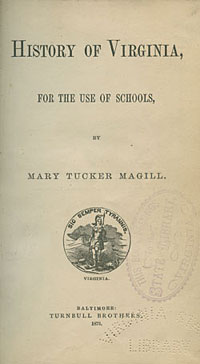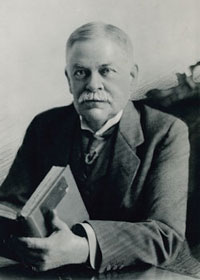Teaching and Reading Virginia History

Interpretations of Virginia history in textbooks have been controversial for decades. Some books romanticized and altered events or failed to treat important or controversial topics. In other instances, white Virginians complained that Northern publishers presented narratives that were unfair to the South and the state. During the decades after America’s Civil War, heritage organizations such as Confederate veterans groups and the United Daughters of the Confederacy appointed committees to expose what they believed were improper depictions of the South. After World War II, the General Assembly created a state textbook commission. Believing that textbooks then available slighted Virginia's role in the founding of the nation and misrepresented its part in the Civil War, the legislators also complained that the books focused too much on social and cultural history and too little on political history. The commission sponsored new textbooks on Virginia history, geography, and government for use in the fourth and seventh grades and in high school. Many Virginia educators became dissatisfied with the commission's books, and the school board in Fairfax County even created its own textbook. Adoption in the 1990s of uniform statewide Standards of Learning for social studies education in Virginia led to the publication of a new generation of textbooks that included more social and cultural history and enhanced treatment of economic and demographic history, women, African Americans, and Indians.
Textbooks, of course, are not the only sources of Virginia history. Our parents and grandparents have told us about their lives; we view historical markers and visit historic sites; we see movies and television programs set in Virginia, and we read biographies, histories, and even novels. Before the twentieth century, history and biography were often regarded as branches of literature, and many people acquired their understanding of the past from novels and historical romances as well as from biographies and historical narratives. The nineteenth-century literary genre known as the Virginia Novel spread a romanticized view of plantation society throughout the United States. Novels such as John Pendleton Kennedy’s Swallow Barn: Or, A Sojourn in the Old Dominion presented an interpretation of Virginia society as admirable and aristocratic, its leading ladies and gentlemen embodying the virtues of the Victorian period.

Some twentieth-century writers found fault with the romanticized interpretation of the Virginia Novels. Ellen Glasgow, who later won a Pulitzer Prize, sharply criticized the Virginia gentlemen who had been the exemplary characters of the Virginia Novel in her Virginia, published in 1913. In his 1977 book The Shad Treatment: A Novel, Garrett Epps presented an unflattering portrait of twentieth-century Virginia political leaders who resembled the disappointing Virginians of Glasgow's novels more than the admirable characters portrayed in Kennedy's Swallow Barn or Nathanial Beverley Tucker's George Balcombe.